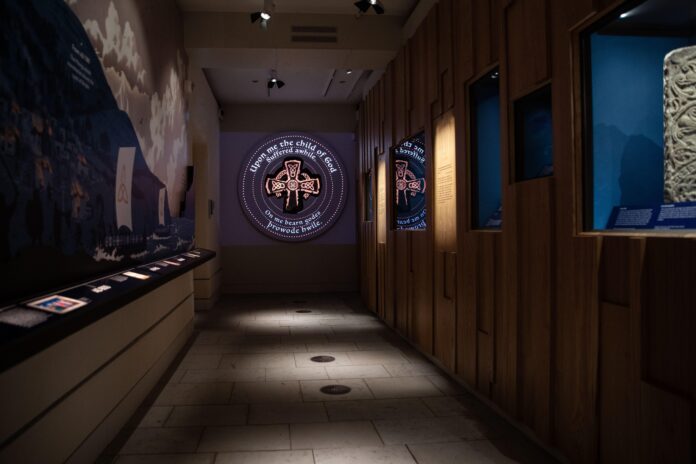Organised religion is a lot less popular in Britain today than it once was, a study earlier this year having found that the share of the British population who identify as religious has halved since the 1980s. This might make the idea of the Faith Museum seem counter intuitive. Not so, says the patron behind this ambitious new project, which opened in Bishop Auckland, County Durham, earlier this month.
The museum is the brainchild of multi-millionaire investor Jonathan Ruffer, who established the Auckland Project—a collection of galleries, heritage buildings and gardens in the town—in 2012. Adding a faith museum to the portfolio has always been part of the plan: it makes perfect sense, he says, given that he is—as he puts it—“God-dy” (meaning a believer) and that the northeast of England has links to belief stretching back millennia. The challenges of curating a museum about faith was part of the attraction: “Catching something difficult to grasp is [something] I’m used to doing in the investment world,” he says.
The 740 sq. m new museum is housed in the 14th-century Scotland wing of Auckland Castle, a Grade I listed building that dates back to around 1183. The wing has been extended into a chapel-like structure by Niall McLaughlin Architects, with a monolithic, pitched roof building made of local Cop Crag sandstone. It was made possible using part of a £12.4m grant from the National Heritage Fund as well as funding from the Jerusalem Trust. Many of the items on display, meanwhile, have been lent by institutions including London’s British Museum and Victoria and Albert Museum, and the Ashmolean in Oxford.
The space is split into two halves. The downstairs galleries take the visitor on a journey through 6,000 years of belief, beginning with works such as the Gainford Stone—a piece of sandstone from 4,000-2,500BC that features cup and ring imagery thought to represent a desire to make a connection between the seen and unseen worlds. Also displayed are tools used to help construct the sacred heritage site of Stonehenge, as well as the Binchester ring, dating to the third century AD and discovered at the Roman fort of Vinovium on the banks of the nearby River Wear. The ring is inscribed with an anchor and fish, early symbols of the followers of Jesus, and is one of the earliest relics of Christian belief ever found in the UK.
Another highlight is the Bodleian Bowl, lent by the Ashmolean museum. The decorated copper alloy vessel, dating back to the 12th century, is a rare artefact relating to Britain’s Jewish community at the time. Research has suggested that its inscription, which begins “This is the gift of Joseph, the son of the Holy Rabbi Yechiel”, likely referred to Joseph, a rabbi in Colchester, who may have given the bowl to the Jewish congregation there before heading to the Holy Land.

The Bodleian Bowl, 13th century
© Ashmolean, University of Oxford
Upstairs, meanwhile, is devoted to contemporary art that tackles subjects related to faith. This section includes work by painter Nicola Green, as well as photographers Alice Tomlinson and Khadija Saye, the latter who tragically died in the Grenfell Tower fire in 2017.

A installation view of works from Khadija Saye’s series Dwelling: in this space we breathe, 2017
© The Estate of Khadija Saye, London. In memory: Khadija Saye Arts at IntoUniversity
A space that is currently empty is the Great Gallery. Ruffer hopes to furnish it with a 20ft-long gold braid tapestry from the 16th century, which he calls “effectively, the birth certificate of the Church of England”. The work, which was commissioned by Henry VIII and shows St Paul setting fire to piles of heathen books, was thought to have been destroyed for two centuries but turned up in a Spanish collection in 2014. The Spanish government says it will be allowed to return to the UK if the Faith Museum can raise the necessary funds—a total of £4.55m.
The museum, says Ruffer, isn’t about trying to convert anyone to any belief system: the focus is on giving visitors space to think about the role of spirituality in societies past and present. He also wants to open their minds to the spiritual dimension. “It’s about challenging people,” he says.

























